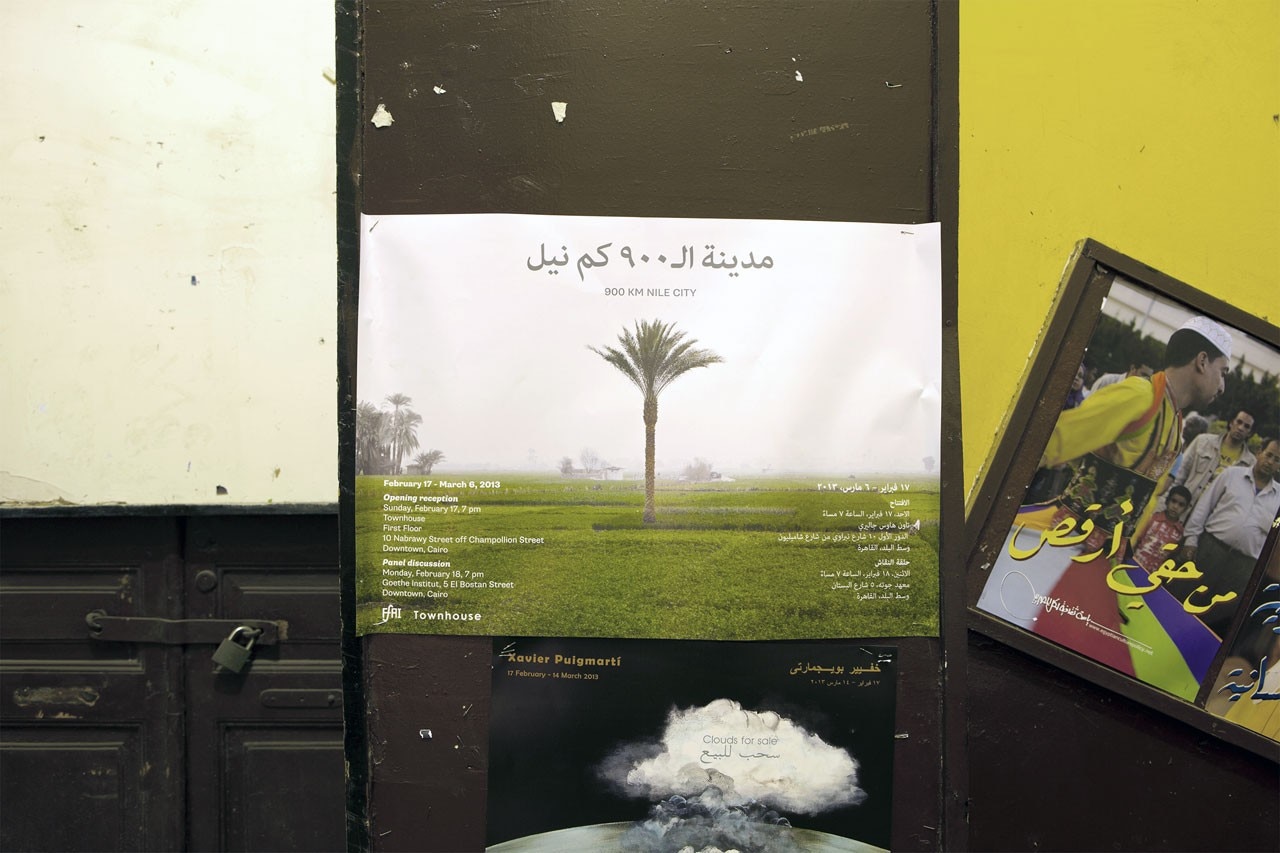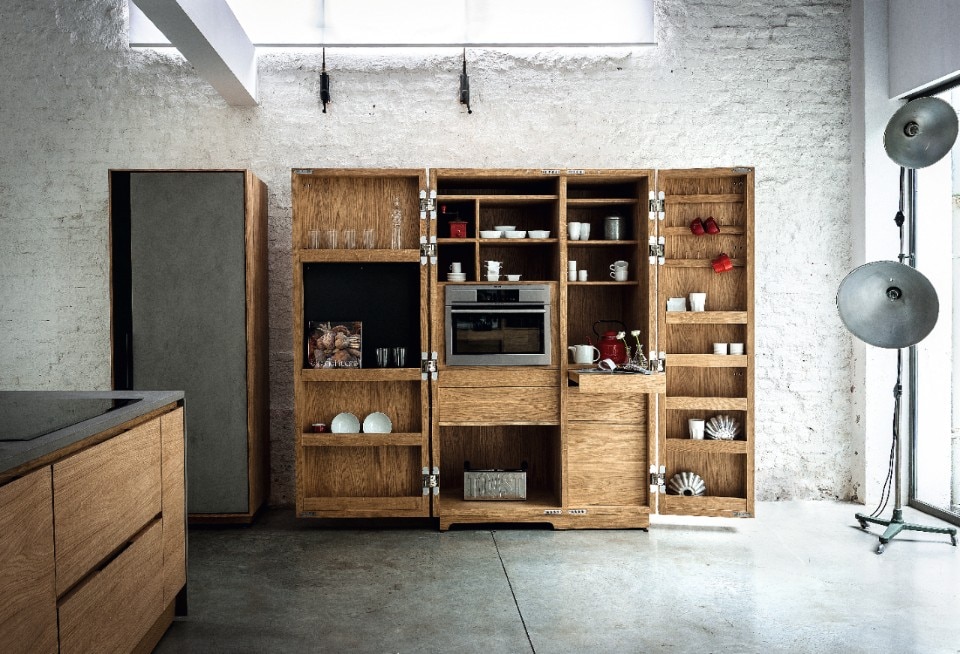The 900 km Nile city project developed by Atelier Kempe Thill, baukuh, GRAU, Lola and Aymen Hashem recently had a homecoming show in Cairo's Townhouse Gallery and at the American University of Cairo, following its debut at the Rotterdam International Architecture Biennale and later as part of the "Adhocracy" show at the 1st Istanbul Design Biennial. The show tackles the difficult urban conditions facing the presumably rural Nile Valley and follows baukuh’s editorial on Domus 961 / September 2012, which featured the bold statement of "Design or Extinction". The editorial was illustrated by a cover drawing that evoked the happy ending one would hope for after a challenging game of Tetris, in a world of straight lines and perfectly corresponding shapes and voids.
In the chaotic surroundings of the Townhouse Gallery in downtown Cairo, the dichotomy between design and extinction, away from the Tetris graphics, does not seem so far fetched. Extinction suddenly seems like a potent possibility and design on a planning and totalitarian level seems to have long disappeared, probably along with the last government that was able to envision a state structure at the level of ambition of the Egyptian territory.
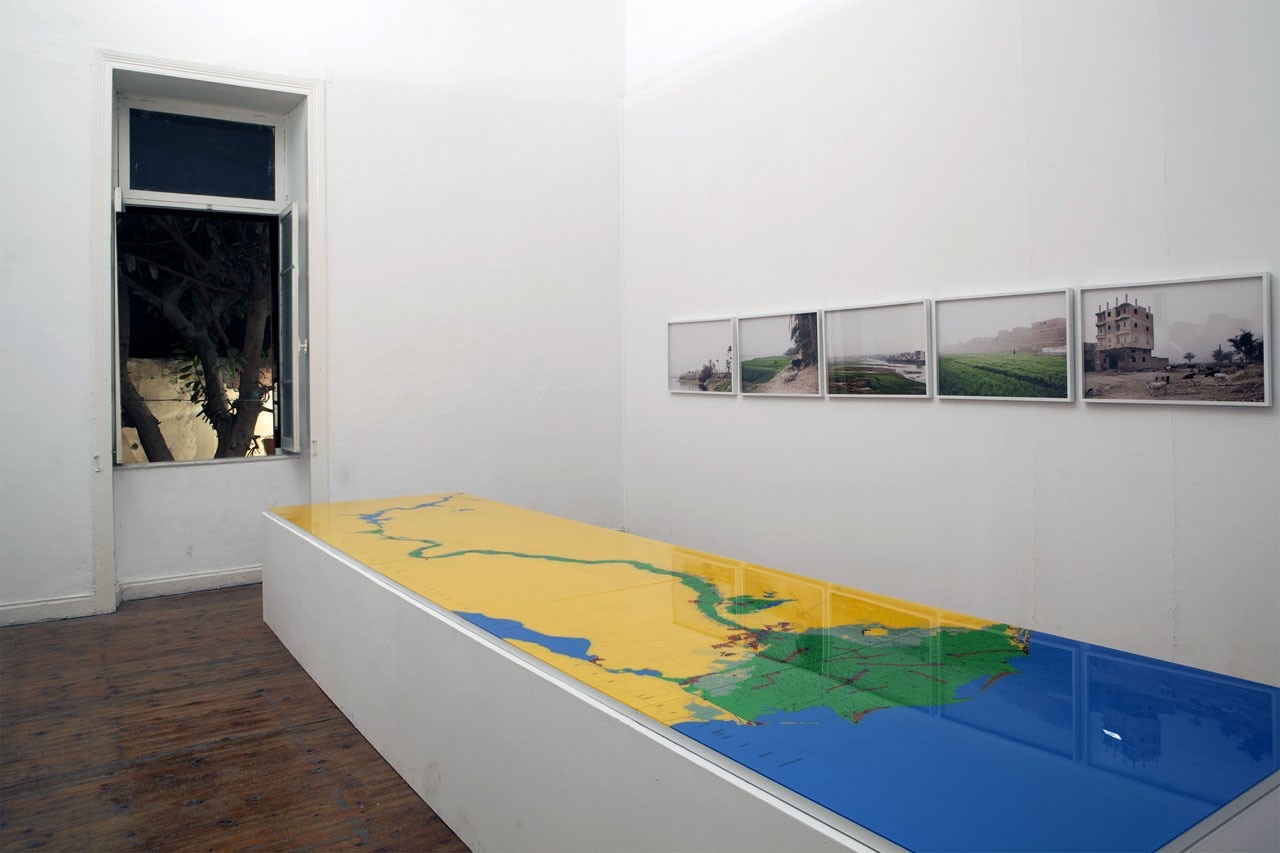
Following a decade where architects and architecture research laboratories seem to have mapped all the available urban conditions from the Pearl River Delta to the Baltic sea, passing by the Swiss Alps and the Po Valley, through a bevy of diagrams, statistics, crosscomparisons and Armageddon-like predictions for the very near future, the presentation of the show steers clearly away from putting too much importance on data.
Although the documentation is present, providing insight, context and background into the research process that formed the design outcome, it is not the focal point of the exhibition. Rather, it takes a supporting role, organized neatly and politely alongside four more slender volumes of photographic documentation and a manifesto of 90 points about the 900 km Nile City. Exhibited in a corner room in the gallery the 5-tome publication in their Islamic green covers, perhaps dressed to seduce the current government, appears somewhat like a footnote to the show itself.
The presentation of the show steers clearly away from putting too much importance on data
The exhibition seems to place itself from the standpoint that we have now half-digested the idea that more than half of the word’s population lives in urban settings and mapped the often devastating effect this has on previously virgin landscapes — the Nile Valley providing a perfect example. The time has probably come to say: and what now?
The answer here is straightforward and simple: design. Or rather, designs — design proposals that are multiple and diverse.
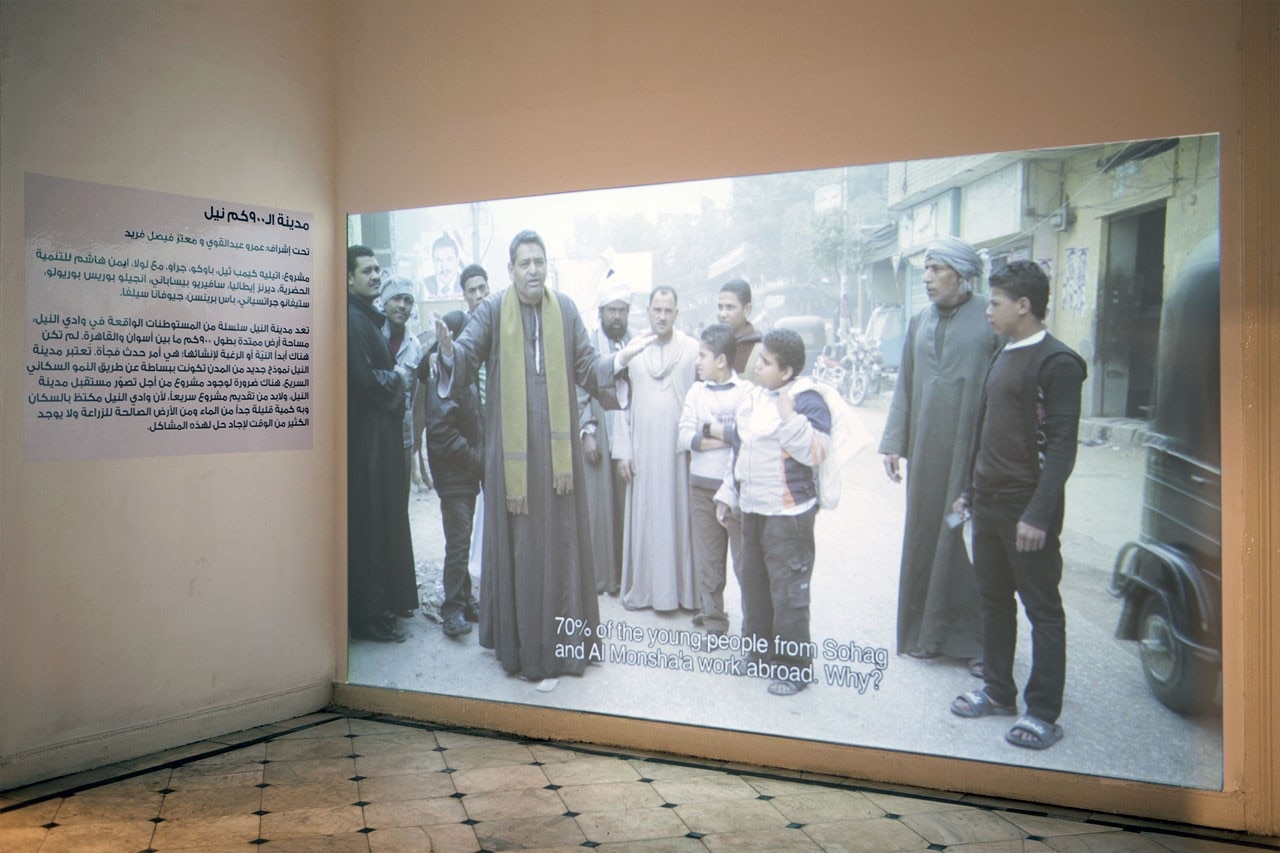
Seemingly, the design proposals are represented in a bold yet purposely simplified way, through two large-scale models. One depicts the larger territorial condition of the Nile River, from Nasser Lake to its dissolution through the delta in the Mediterranean. The other zooming in a case-study section in the governorate of Sohag. The pastel-toned palette of the September 2012 Domus cover is replaced by a more assertive quartet of primary colors, as if to highlight the assertiveness in the belief of the place of design in the future of the territory.
Ironically, the design proposals themselves blend into the model as if to appear as only another possible version of reality. The slivers of models seem to only give a hint of the potential and outcome of the design, which camouflages into the background of the model as if to appear to have always been part of the historical geometric distribution of the landscape. In much the same way, the photographic documentation by photographers Bas Princen, Stefano Graziani and Giovanna Silva sometimes leave you with the feeling that you would like to have the option of un-zooming a few notches up like on a Google earth view.
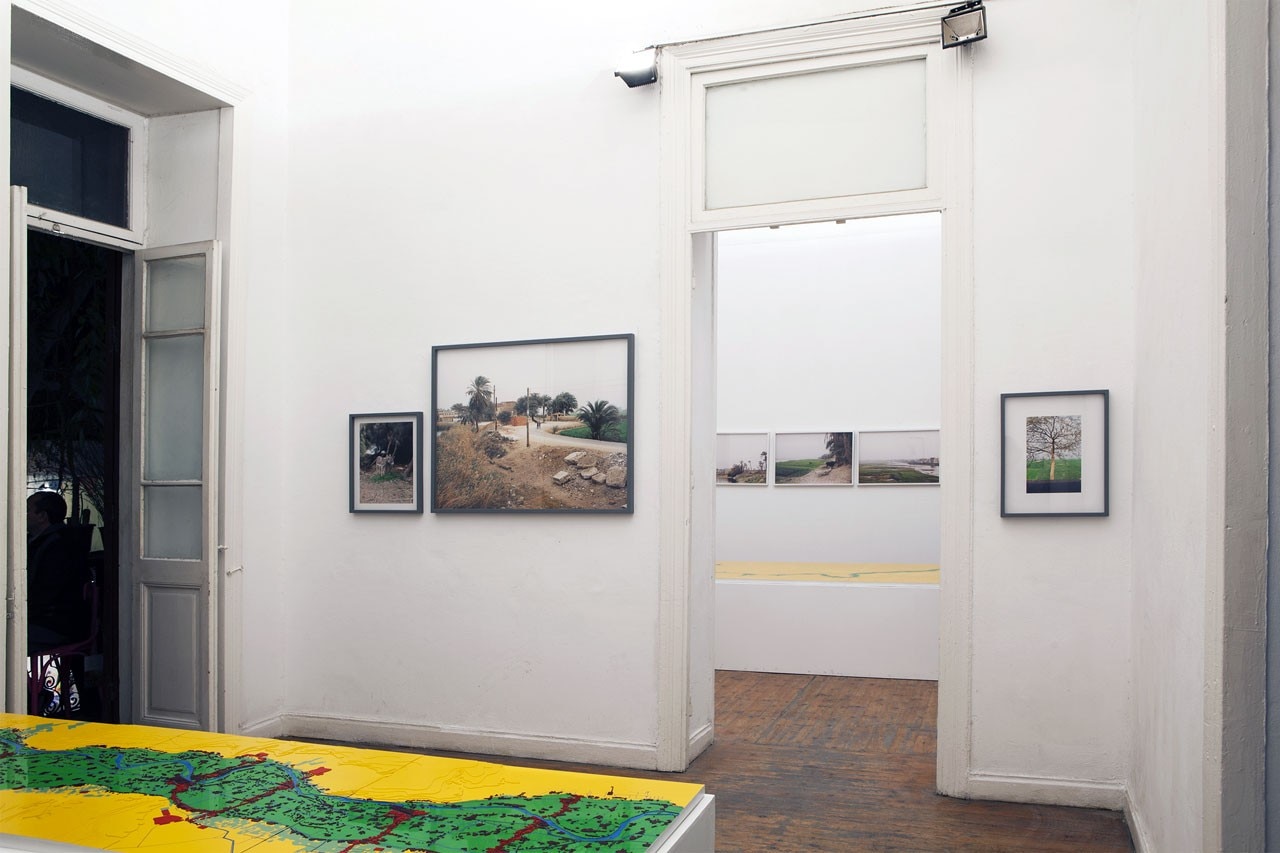
Instead you are offered precise moments into the landscape, a cross-section of random and seemingly insignificant yet highly suggestive spaces within the Valley.
The choice of photographs belies the convictions of the architects that the reality will always be more ambivalent than to be simplified in a few aerial shots and reductive diagrams — encouraging the viewer to surrender to the fact that the complete complexity of the situation can never be fully grasped.
Away from a statistic-rich and data-centered approach to planning, the analysis of the situation of the Nile River landscape is more about atmosphere than numbers. Accepting that any interpretation of it is de facto subjective, it embraces the ambiguity of the landscape, accepting its multiple and complex nature.
Accepting that any interpretation of it is de facto subjective, the project embraces the ambiguity of the landscape, accepting its multiple and complex nature
With minimal captions, the photographs of the river delta placed alongside the models seem like they could exist in parallel worlds. The open- source nature of the design proposal, which borrows from previously-tested design strategies (low-technology systems, increased public transport, …) embraces the complexity of the situation by offering a plethora of small design proposals that feel like they can be implemented totally or partially at any given moment in time. Although they address a situation that is on the brink of collapse, they offer a design with no expiry date- design solutions that accept and integrate existing conditions as they are, and seem to be open-ended enough to be able to assimilate other less-desirable design options along the way.
A the entrance of the gallery space, the life-size projection of Saverio Pesapane's film It’s Countryside harshly invites the starkness of reality back into the show. As a middle-aged Haji from the valley, the main protagonist of the video speaks in staccato-like bursts, intercepted by still shots of the Nile Valley landscapes. As he speals, his crowd grows bigger and bigger, making him the official spokesperson of the show.
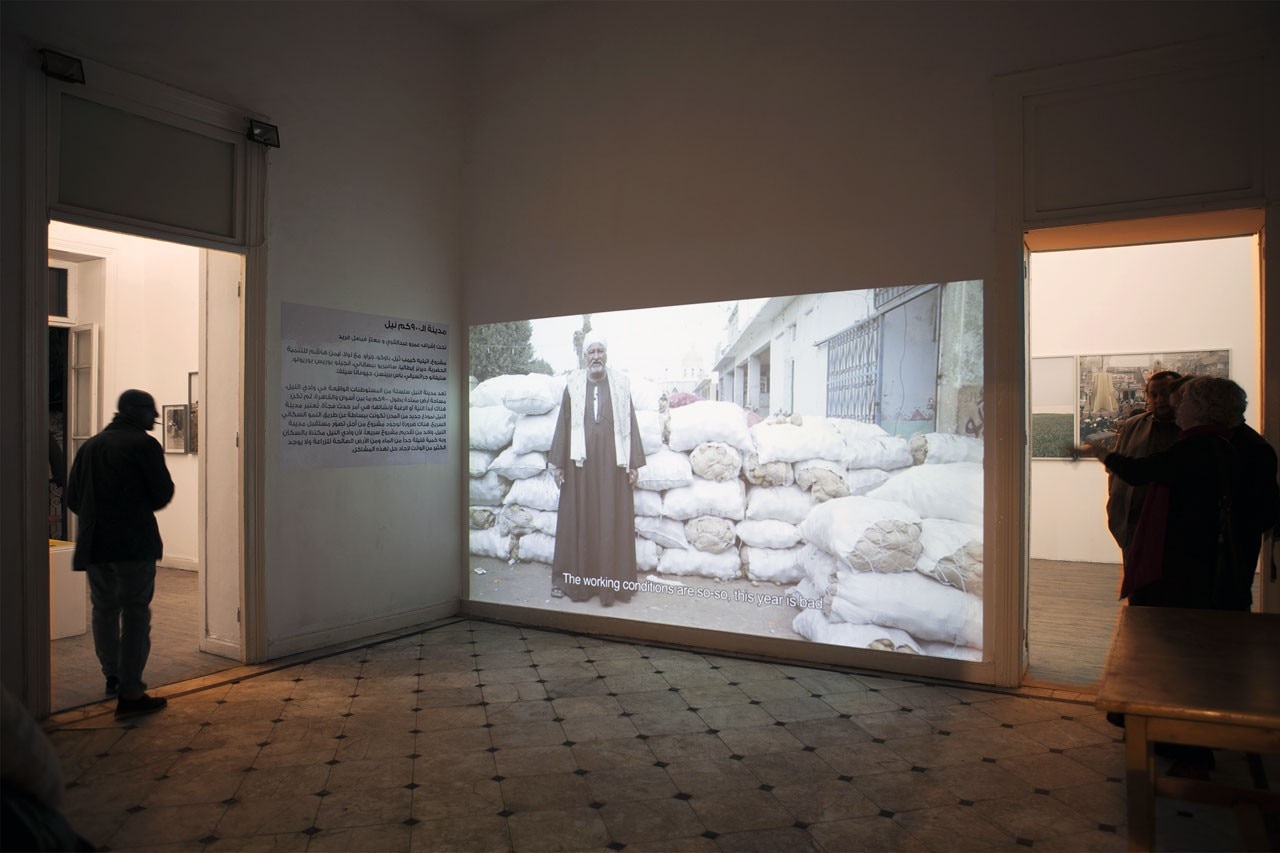
He perfectly summarizes the situation on the ground- presenting in a simplified yet to the point manner the emergency of the situation and the potent threat of extinction. While we spend endless amounts of time debating the outcome of situations we cannot know nor predict, it’s startling to think about how little we do and plan about the things we do know. The extrapolation of what will become of the Nile river delta in its current condition seems only obvious and the show successfully manages to present a series of well-orchestrated solutions in the same obvious manner.
From a movement of architects that can sometimes be reproached of not engaging in contemporary issues, the research and show not only tackle a contemporary urban situation head on, but by having the courage to propose solutions, shows an unexpected optimism even in the face of extinction. Noura Al Sayeh

With Titano, design meets performance
The Titano aluminium range by Oknoplast continues to stand out thanks to its high-performance and minimalist design — especially when combined with the Lunar Square handle.



